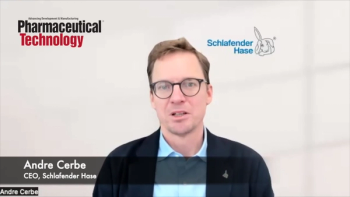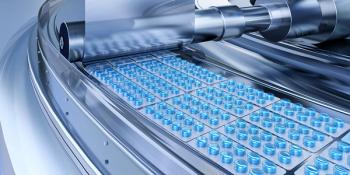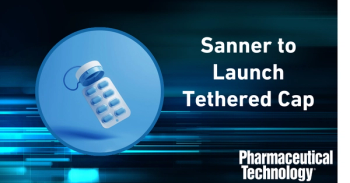
Pharmaceutical Technology Europe
- Pharmaceutical Technology Europe-03-01-2010
- Volume 22
- Issue 3
Challenges and trends in lyophilization
Pharmaceutical Technology Europe discusses some of the latest challenges and innovations in pharmaceutical lyophilization.
The full version of this lyophilisation feature can be read in the March issue of our digital magazine: http://www.pharmtech.com/ptedigital0310
The term 'lyophilisation' literally means to make a substance 'solventliking'. However, the purpose of lyophilisation (or freeze drying) is not always to improve the dissolution of poorly soluble compounds; other reasons are to increase a product's shelf life or to allow storage at ambient temperatures. For instance, where the characteristics of a liquid product deteriorate out of specification within 2 months of storage, freeze drying can easily extend this to 2 years. Furthermore, changing the storage temperature of your pharmaceutical product from - 20 °C to room temperature avoids the complications of cold chain supply management, facilitates transportation of the products and increases patient compliance.
Many different pharmaceuticals are freeze dried. Lipophilic small molecules benefit from freeze drying because it creates an increased surface area of the dispersed drug in the porous cake. This can accelerate dissolution significantly and improve bioavailability. When used as an intermediate process step, freeze drying can also facilitate further handling during processing. Additionally, biological compounds, such as larger peptides, proteins and antibodies, often offer acceptable stability only as freezedried formulations.
Two of the main types of formulations that are candidates for freeze drying are liposomal formulations and microsphere formulations. Liposomal formulations are often candidates because their physical shape needs to be maintained. Lipoplexes (liposomes with additional compounds or groups attached to them) are particularly vulnerable — lipid oxidation, aggregation or leakage of the active from the inner core are all potential threats to biological activity. As a result, these formulations must often be freeze dried to preserve their initial characteristics. Because freeze drying is a water-based process, however, it is imperative that the correct excipients are selected and optimised.
Shem Compion.Getty Images
Meanwhile, microsphere formulations used for the controlled release of actives are almost always freeze dried because the formation of a dry state is the only way to prevent premature release of the active before administration. In addition, the API that is encapsulated in the microspheres may also have stability issues that require lyophilisation.
Key considerations
When developing a freezedried formulation, the key considerations are:
- API stability. Some compounds, such as proteins, need to be protected with special cryo and lyoprotectants during the freezedrying cycle. There are many protectants available, but not all are suitable; for example, sucrose can be a good cryoprotectant, but will exclude all diabetic patients from the pharmaceutical's target population.
- Stability of the formulation before, during and after freeze drying. To increase a product's stability, the product will need to be stable during preparation of the formulation, during filling and during the freeze drying process itself. If it shows stability issues during freeze drying, or before that, the formulation is not optimised for freeze drying and you will need to go back to the laboratory. Complex formulations, such as lipoplexes, can be susceptible to degradation. For these formulations, a protectant with a high glass transition temperature (Tg) is essential because the solid matrix needs to remain amorphous during freeze drying.
- Excipients selection. When developing the formulation, you should take into account the fact that you will be using additional excipients to specifically protect your compound during freeze drying — a broad range of sugars, polyols, polymers and oligomers is available for this purpose. When deciding which excipients to use, specific information, such as the physical properties, like the ability of protectants to incorporate the active, flexibility of the backbone of the polymer, and glass transition temperature during freeze drying, should all be considered. Furthermore, the selection of pH, anti-oxidants and/or surfactants can also greatly improve the formulation's performance. You should choose wisely because any excess excipients that are not critical may have a negative influence on your final product.
- Physicochemical properties of API. It is not only the physicochemical properties of the excipient that are important; any available information regarding the compound's characteristics, such as solubility profiles and disintegration properties— anything to complete the picture of the compound will be considered as well. For example, a protein can affect the Tg of the excipients in a completely different way than poorly soluble small molecules can. The effect of buffer salts and the Tg of the freeze concentrated fraction is then investigated using a Temperature Modulated Differential Scanning Calorimeter (TMDSC), which enables a proper starting point for the selection of the product temperature during primary drying.
- Reconstitution time. Increasing the specific surface area of the cake accelerates dissolution. Furthermore, maintaining good wettability, especially when lipophilic molecules are incorporated, is beneficial in this respect.
- Reaching acceptable water content. Lower water content reduces molecular mobility and, hence, increases shelf life.
- Economics of freeze drying. Firstly, the freeze drying cycle time is of major importance. Minimizing the volume of solution per vial reduces cake height and shortens primary drying. A shorter freeze drying cycle is essential to minimize the cost of goods. Secondly, when it comes to scaling up during later clinical development phases, it is beneficial to use a higher concentration of the formulation because you can use smaller vials and, therefore, freeze dry more vials in a single batch.
- Freezing rate. One of the most critical steps in a freeze drying process, which is often taken too lightly, is the freezing of the formulation. The freezing rate at the start of a freeze drying run can be critical with respect to phase separation and concentration gradients in the vial because it can yield more dense layers at the top of the cake, forming a barrier for water transport. Furthermore, for the API to be incorporated in the cake, it is known that freezing rates are critical.1,2 In the early feasibility stage, small freeze dryers are used and vials are frozen?— sometimes simply with liquid nitrogen. The scalability of such a method and its freezing rate is difficult to translate to a production environment where industrial scale freeze dryers are used. It helps if the freeze drying process is first developed on a laboratory scale using test runs that mimic a feasible situation in your GMP environment— various freezing rates can be accurately mimicked and controlled in the laboratory using suitable freeze dryers. The amount of vials in a freeze dryer can sometimes have a noticeable effect on the cooling capacity of the shelves.
- Clinical use. What is the dose per vial to be administered? What is the route of administration? What is the reconstitution volume and the resulting ionic strength? These questions must be answered. During clinical development, dose range finding studies can complicate the decision of vial content. Highdose products present a freezedrying challenge in the sense that the formulation does not leave much room for freezedrying agents. In this case, it is not so much the API that presents the challenge, but the concentration in which it needs to be administered.
Current trends
Freeze drying is being increasingly used in both formulation development and manufacturing of pharmaceuticals for poorly solubles, biopharmaceutical molecules and, more recently, biosimilars.
Poor solubility is an increasing characteristic of new pharmaceuticals because highthroughput screening renders compounds with low solubility. The challenges of low solubles become apparent after a compound has already progressed through the initial development stages. One possible solution is to use cosolvents; however, as these can pose additional formulation challenges, freeze drying using organic solvents such as TBA or TBAwater mixtures is becoming more common.
Another trend is the growth in the number of siRNA and antibodybased formulations. These compounds regularly require freeze drying, not because of the active itself but to maintain the integrity of the formulation or vehicle to target the siRNA in the body.
Future growth
Because innovative freezedrying formulations or freezedrying techniques are eligible for patenting, freeze drying may form an important part of a company's intellectual property in the future. The continuous growth in the need for freezedried formulations will also be fuelled by the fact that many of the compounds currently in development are biologicals — complex chemical molecules that need complex vehicles to enable targeting in the body.
An emerging technique is spray freeze drying where a liquid is nebulized and then frozen. The frozen spheres are then freeze dried. The fast freezing renders instantaneous vitrification, which is beneficial for stabilisation and optimal dispersion of the API throughout the solid matrix of excipients. This can even be performed at atmospheric conditions.3,4 From a production perspective, this process might offer advantages because it allows for continuous operation and the absence of vacuum increases operational robustness. Nevertheless, there seems to be reluctance to move towards this technique given that the equipment is not yet widely available for the industry.
PTE Digital extracts
Engineering trends
Lyophilisation is an expensive process that demands high investments in technology, but for many products pharmaceutical freeze drying is currently the only method to ensure durability. The high costs associated with this process, however, have provided companies with incentives to find ways of making lyophilisation more economical and efficient. In recent years, environmental protection has also become important and the greatest development potential in freeze drying today lies in reducing energy and resource consumption.
Franz Bosshammer
Optima Group pharma
Freeze dryer cleaning
Although the freeze dryer is, logically, a noncontact part of the process chain, regulatory authorities tend to regard these internal surfaces as direct contact and, therefore, GMP mandates cleaning. There is no GMP requirement for CIP, but CIP is increasingly the method of choice. CIP should always be prefaced with a visual inspection to remove solid objects from the chamber and to verify the effectiveness of the clean after the CIP cycle is completed.
Kevin Murgatroyd
SciTech Engineering Ltd
H2O2 sterilisation
Lyophiliser sterilisation is usually conducted using steam. This will remain the method of choice for years to come because it is a commonly accepted method by users and regulators. However, the use of H2O2 gas for sterilisation will have a niche application for new equipment. If energy costs continue to rise and more environmental directives come into play, H2 O2 gas could offer an alternative to steam sterilisation because the daily routine costs are much lower.
Maik Guttzeit
GEA Pharma
A safe lyophilised vaccine
The efficacy of a subunit vaccine may be enhanced using a liposomal adjuvant system. Liposomal formulations can exhibit physical and chemical instabilities, but these can be overcome using freeze drying. During freeze drying, the lipid bilayer is disrupted and the vesicles fuse and aggregate. This destabilising effect can be positively applied to entrap antigens within liposomal vesicles. To ensure the formulation maintains its original characteristics, lyoprotectants can be added to the formulation prior to freeze drying.
Sarah E. McNeil
Yvonne Perrie
Aston Pharmacy School
Computer modelling
Computer modelling of the freeze drying process has mainly remained in the domain of academic research because modelling software requires the experimental determination of various parameters. Large pharmaceutical companies, however, have shown a growing interest in the modelling approach because it can facilitate process design and scale up, and remove empirism in the design of freeze drying cycles. In the future, the FDA's QbD approach will probably help to increase the use of computer modelling.
Stéphanie Passot
Institute of Technology for Life, Food and Environmental Sciences
Freeze drying biologicals
When freeze drying biological materials, a major concern is achieving product consistency both within a batch and between batches. Consistency is judged over a number of parameters — heterogeneity over any one of which may call into question the quality of the manufacturing process. In earlystage development, selecting and optimising a formulation that will preserve your product so as to maximise the shelf storage stability are two considerable processes.
Dr Paul Matejtschuk
National Institute for Biological Standards & Control
Engineering trends
Lyophilisation is an expensive process that demands high investments in technology, but for many products pharmaceutical freeze drying is currently the only method to ensure durability. The high costs associated with this process, however, have provided companies with incentives to find ways of making lyophilisation more economical and efficient. In recent years, environmental protection has also become important and the greatest development potential in freeze drying today lies in reducing energy and resource consumption.
Franz Bosshammer
Optima Group pharma
Freeze dryer cleaning
Although the freeze dryer is, logically, a noncontact part of the process chain, regulatory authorities tend to regard these internal surfaces as direct contact and, therefore, GMP mandates cleaning. There is no GMP requirement for CIP, but CIP is increasingly the method of choice. CIP should always be prefaced with a visual inspection to remove solid objects from the chamber and to verify the effectiveness of the clean after the CIP cycle is completed.
Kevin Murgatroyd
SciTech Engineering Ltd
H2O2sterilisation
Lyophiliser sterilisation is usually conducted using steam. This will remain the method of choice for years to come because it is a commonly accepted method by users and regulators. However, the use of H2O2 gas for sterilisation will have a niche application for new equipment. If energy costs continue to rise and more environmental directives come into play, H2O2 gas could offer an alternative to steam sterilisation because the daily routine costs are much lower.
Maik Guttzeit
GEA Pharma
A safe lyophilised vaccine
The efficacy of a subunit vaccine may be enhanced using a liposomal adjuvant system. Liposomal formulations can exhibit physical and chemical instabilities, but these can be overcome using freeze drying. During freeze drying, the lipid bilayer is disrupted and the vesicles fuse and aggregate. This destabilising effect can be positively applied to entrap antigens within liposomal vesicles. To ensure the formulation maintains its original characteristics, lyoprotectants can be added to the formulation prior to freeze drying.
Sarah E. McNeil
Yvonne Perrie
Aston Pharmacy School
Computer modelling
Computer modelling of the freeze drying process has mainly remained in the domain of academic research because modelling software requires the experimental determination of various parameters. Large pharmaceutical companies, however, have shown a growing interest in the modelling approach because it can facilitate process design and scale up, and remove empirism in the design of freeze drying cycles. In the future, the FDA's QbD approach will probably help to increase the use of computer modelling.
Stéphanie Passot
Institute of Technology for Life, Food and Environmental Sciences
Freeze drying biologicals
When freeze drying biological materials, a major concern is achieving product consistency both within a batch and between batches. Consistency is judged over a number of parameters — heterogeneity over any one of which may call into question the quality of the manufacturing process. In earlystage development, selecting and optimising a formulation that will preserve your product so as to maximise the shelf storage stability are two considerable processes.
Dr Paul Matejtschuk
National Institute for Biological Standards & Control
References
1. H. Leuenberger, J. of Nanoparticle Research, 4, 11–119 (2004).
2. H.R. Constantino et al., J. Pharm. Sci., 91(2), 388–395 (2002).
3. M. Mumenthaler and H. Leuenberger. Int. J. of Pharm., 72(22), 97–110 (1991).
4. T.L. Rogers et al., Eur. J. Pharm. Biopharm., 54(3), 271–280 (2002).
This article was based on contributions by Hanneke Bunte, Dirk Jan van Drooge, Gert-jan Ottjes, Rianne Roukema, Ruud Verrijk and Marie-Andree Yessine (OctoPlus).
The full version of this lyophilisation feature can be read in the March issue of our digital magazine: http://www.pharmtech.com/ptedigital0310
Articles in this issue
almost 16 years ago
Enhancing the bioavailability of poorly soluble drugsalmost 16 years ago
Focus on freeze drying digital supplementalmost 16 years ago
Thermal fingerprinting: a way to optimize lyophilizationalmost 16 years ago
Moisture-activated dry granulation: The 'one-pot' processalmost 16 years ago
Newsalmost 16 years ago
Selecting a freeze dryeralmost 16 years ago
Lyo controversiesalmost 16 years ago
Reinvigorating European R&D innovationalmost 16 years ago
Nanotechnology: A lifeline for drying pharma pipelines?Newsletter
Get the essential updates shaping the future of pharma manufacturing and compliance—subscribe today to Pharmaceutical Technology and never miss a breakthrough.




